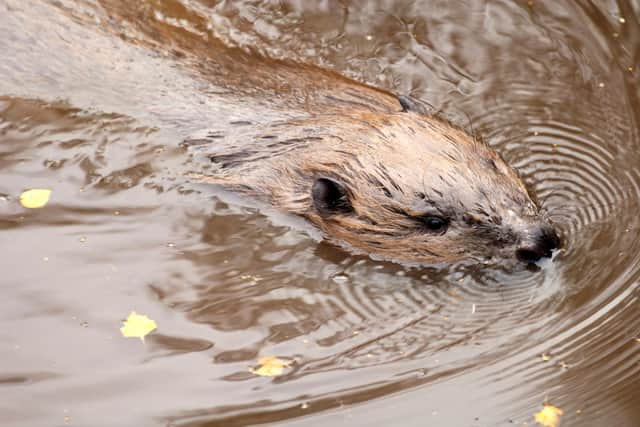Beaver population moves into Forth Valley as numbers living wild more than double
and live on Freeview channel 276
According to a recent NatureScot survey there are 1000 of the animals living in Scotland, with a population now spreading into areas like Stirling.
Robbie Kernahan, NatureScot director of sustainable growth, said: “Wildlife is declining in Scotland so this extensive survey, which reveals an increasing beaver population, is great news for nature in Scotland.
Advertisement
Hide AdAdvertisement
Hide Ad"Beavers play a vital role in creating and restoring wetlands where other species can thrive, reducing downstream flooding and improving water quality. We also hope that many people in Scotland will enjoy spotting these sometimes elusive but fascinating animals, as they become more common.”


The survey, carried out last winter, is the largest, most comprehensive and authoritative survey of beaver numbers and their range ever conducted in Britain. It gathered detailed and up-to-date information on the locations of active beaver territories, as well as assessing the health and spread of the overall population, to help inform future beaver work.
NatureScot worked with Scotland’s foremost beaver specialist, Roisin Campbell-Palmer, and experts at the University of Exeter to conduct the survey.
Dr Alan Puttock, from the University of Exeter, said: “This survey, the biggest undertaken in Britain, combined extensive field surveys and analysis to map the spatial distribution and territory dynamics of beavers across Tayside and surrounding areas.
Advertisement
Hide AdAdvertisement
Hide Ad"Developing this methodology in what is currently Britain’s largest wild population helps provide robust means by which to study beaver populations nationally.”
The new survey covered a large area, as beavers have been sighted as far afield as Loch Lomond to the west and Fife to the south east.
Dr Campbell-Palmer, the report lead author, said: “Beavers are recognised as ecosystem engineers with important biodiversity benefits, though some impacts can be challenging alongside certain land-use practices.
"This survey will hopefully provide valuable information to land managers and policy makers who are seeking to maximise the benefits and minimise the conflicts associated with the return of beavers to our rivers.”
Advertisement
Hide AdAdvertisement
Hide AdVisit https://www.nature.scot/doc/beaver-management-report-2020 for more information.
